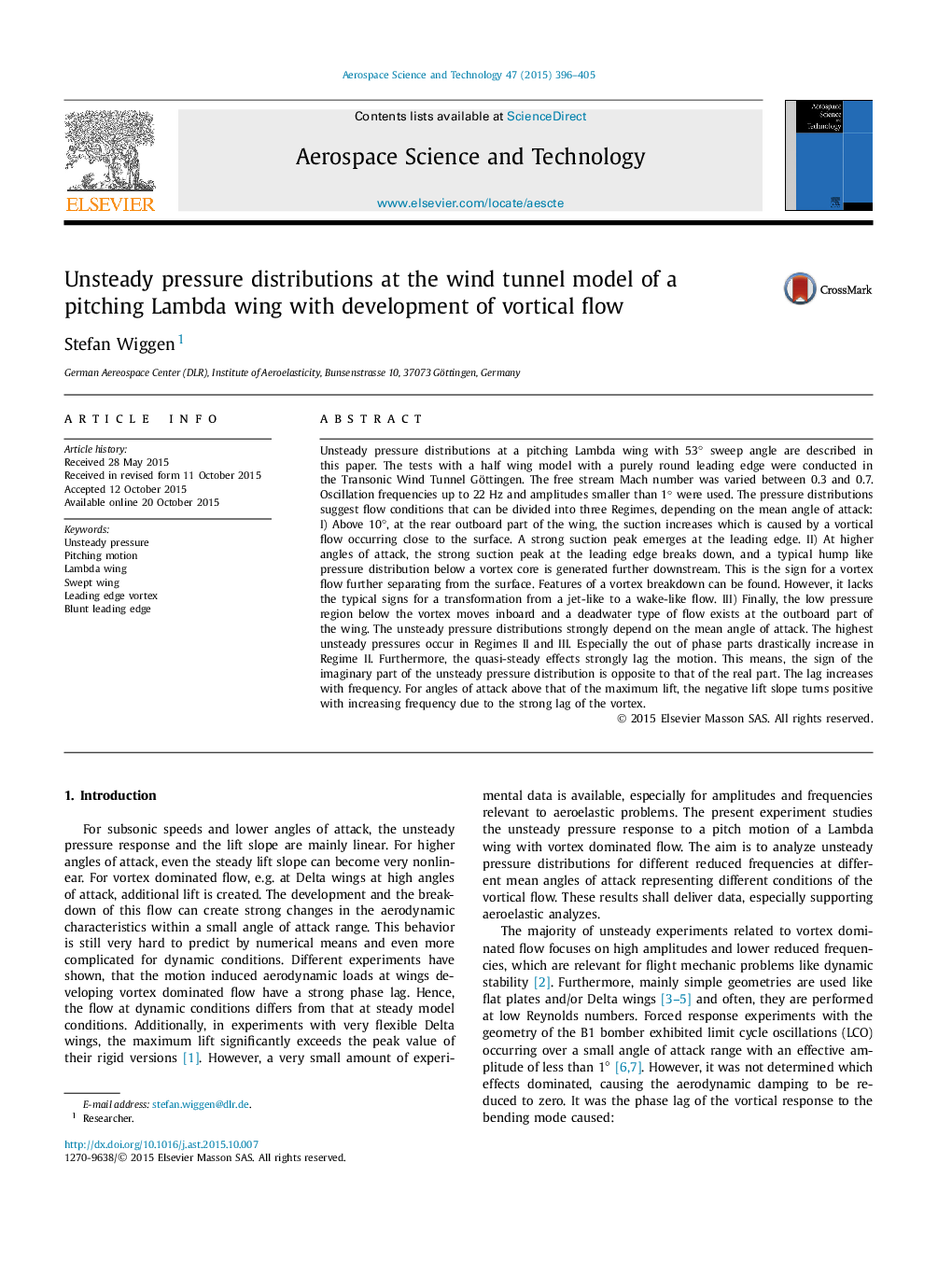| Article ID | Journal | Published Year | Pages | File Type |
|---|---|---|---|---|
| 8058764 | Aerospace Science and Technology | 2015 | 10 Pages |
Abstract
Unsteady pressure distributions at a pitching Lambda wing with 53° sweep angle are described in this paper. The tests with a half wing model with a purely round leading edge were conducted in the Transonic Wind Tunnel Göttingen. The free stream Mach number was varied between 0.3 and 0.7. Oscillation frequencies up to 22 Hz and amplitudes smaller than 1° were used. The pressure distributions suggest flow conditions that can be divided into three Regimes, depending on the mean angle of attack: I) Above 10°, at the rear outboard part of the wing, the suction increases which is caused by a vortical flow occurring close to the surface. A strong suction peak emerges at the leading edge. II) At higher angles of attack, the strong suction peak at the leading edge breaks down, and a typical hump like pressure distribution below a vortex core is generated further downstream. This is the sign for a vortex flow further separating from the surface. Features of a vortex breakdown can be found. However, it lacks the typical signs for a transformation from a jet-like to a wake-like flow. III) Finally, the low pressure region below the vortex moves inboard and a deadwater type of flow exists at the outboard part of the wing. The unsteady pressure distributions strongly depend on the mean angle of attack. The highest unsteady pressures occur in Regimes II and III. Especially the out of phase parts drastically increase in Regime II. Furthermore, the quasi-steady effects strongly lag the motion. This means, the sign of the imaginary part of the unsteady pressure distribution is opposite to that of the real part. The lag increases with frequency. For angles of attack above that of the maximum lift, the negative lift slope turns positive with increasing frequency due to the strong lag of the vortex.
Related Topics
Physical Sciences and Engineering
Engineering
Aerospace Engineering
Authors
Stefan Wiggen,
